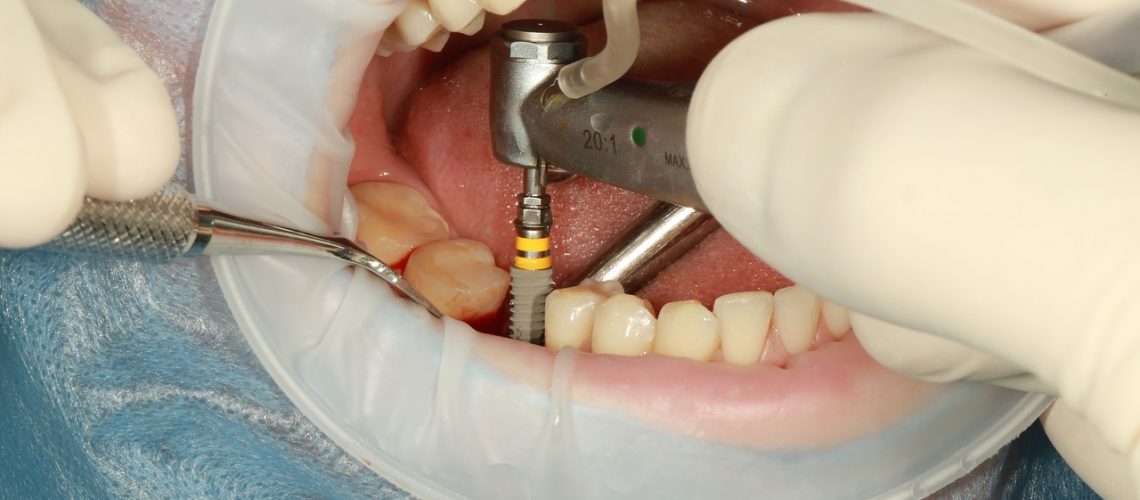A Biased View of Dental Sense
Table of ContentsThe smart Trick of Dental Sense That Nobody is Discussing5 Easy Facts About Dental Sense ExplainedSome Known Incorrect Statements About Dental Sense What Does Dental Sense Mean?
are medical devices operatively implanted right into the jaw to bring back an individual's capacity to eat or their look. They offer assistance for synthetic (phony) teeth, such as crowns, bridges, or dentures. When a tooth is lost due to injury or disease, a person can experience difficulties such as fast bone loss, defective speech, or changes to chewing patterns that cause pain.Dental dental implant systems contain an oral implant body and oral implant joint and may likewise consist of an abutment fixation screw. Same day dental implants. The dental implant body is surgically put in the jawbone instead of the tooth's root. The dental implant abutment is normally connected to the implant body by the joint addiction screw and extends with gums into the mouth to sustain the attached artificial teeth
(https://www.huntingnet.com/forum/members/dentalsense1.html)Framework of The Dental Implant System choosing oral implants, talk to your oral service provider regarding the prospective advantages and threats, and whether you are a prospect for the procedure. Points to take into consideration: Your total health is an essential consider determining whether you are an excellent candidate for oral implants, how much time it will certainly take to heal, and the length of time the implant might stay in location.
Smoking cigarettes may influence the recovery process and reduce the long-term success of the dental implant. The recovery process for the dental implant body may take numerous months or longer, during which time you generally have a short-term joint instead of the tooth. the dental implant procedure: Meticulously adhere to the dental hygiene instructions offered to you by your oral copyright.
Some Known Facts About Dental Sense.
Implant failing can lead to the demand for one more surgical treatment to deal with or replace the dental implant system. Recovers the ability to chew Recovers cosmetic look Helps keep the jawbone from reducing as a result of bone loss Preserves the health and wellness of the bordering bone and gum tissues Aids maintain surrounding (nearby) teeth stable Enhances lifestyle Damage to surrounding all-natural teeth during dental implant positioning Injury to the surrounding cells throughout surgical procedure, such as sinus opening Injury throughout surgical procedure (as an example, fracture of surrounding jawbone) Poor function, such as really feeling like the teeth do not attack with each other typically An experience that the tooth hangs or turning in location resulting from an abutment screw loosening Implant body failing (looseness of the dental implant body) because of systemic infection, which might be most likely in patients with uncontrolled diabetics issues because of regional infection in bone and periodontals supporting the dental implant body because of delayed recovery, which may be most likely in patients that smoke Problem cleaning the gums around the implant, causing inadequate dental health Untreated gum illness Post-surgical tingling due to nerve impingement or damage Always alert healthcare companies and imaging service technicians that you have dental implants prior to any kind of magnetic resonance imaging (MRI) or x-ray procedures.
FDA is not aware of any kind of negative occasions reported for MRI or x-ray procedures with oral implants. Dental implants systems are commonly made from materials that adhere to international agreement criteria of the International Organization for Standardization (ISO) or ASTM International. These requirements have information of what makes a safe material.

A dental implant is a structure that replaces a missing tooth. With screw-like devices, the surgeon inserts an implant into the jawbone, and it works as an anchor for a fabricated tooth, called a crown. A gadget called an abutment links the artificial tooth to the dental implant. The crown is customized to fit the person's mouth and match the shade of their teeth.
The Best Strategy To Use For Dental Sense
Some individuals are not qualified for dental implant surgical procedure. It is for oral specialists to operate people with: intense illnessuncontrollable metabolic diseasebone or soft cells illness or infectionIf these issues are resolved, an individual can have the surgical treatment. In, oral surgeons refrain from operating people with: If people with any one of the above go through oral implant surgical procedure, there is a higher risk of the implant failing.

Dental dental implant surgical procedure is an individualized process. Provide you time to recover. Connect the message and final crown, bridge or denture.
Next off, your cosmetic surgeon will thoroughly position the oral implant into your jaw. Ultimately, your specialist will reposition your gums and shut the cut with stitches. If your implant is near the front of your mouth, your dentist will certainly make a short-lived tooth for you to use up until you heal. By doing this, you won't have a gap in your smile while you recoup.
A Biased View of Dental Sense
Your provider can tell you what to anticipate in your situation. During the recovery stage, your jawbone should fuse to the oral implant. This process, called osseointegration, is important for stability and lasting success. This process can take anywhere from 3 to nine months. In many cases, it may take view it now much longer.
Once your dental implant heals, your dentist can attach the abutment (tiny adapter post) and your last repair (crown, bridge or denture). This typically takes regarding one hour to finish and may require a 2nd small surgical procedure. You shouldn't really feel any type of pain during your oral implant treatment due to the fact that your provider will make use of medication to numb your periodontals.